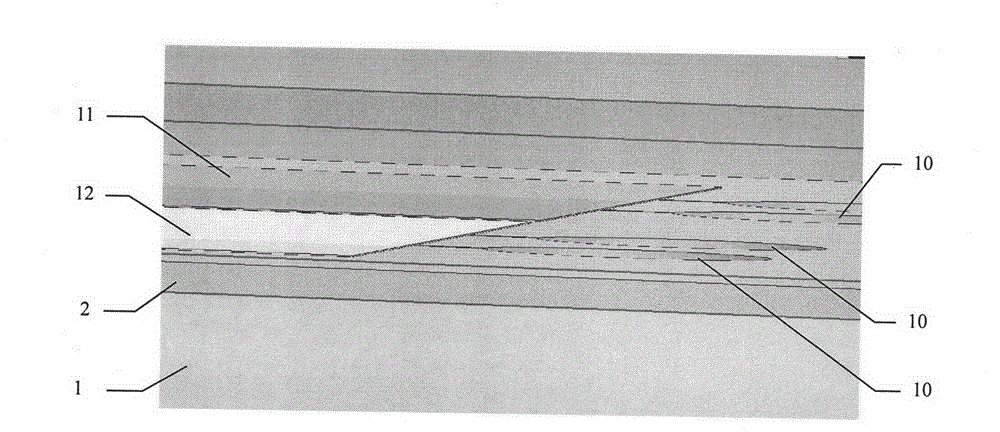High-flux biomaterial-screening microfluidic chip
A technology of microfluidic chips and biological materials, applied in biomass post-treatment, biomass pre-treatment, biochemical cleaning devices, etc., can solve the problems of difficult-to-response cell changes, low efficiency, poor controllability, etc., and achieve improved detection Accuracy and detection efficiency, and the effect of reducing detection costs
- Summary
- Abstract
- Description
- Claims
- Application Information
AI Technical Summary
Problems solved by technology
Method used
Image
Examples
Embodiment Construction
[0014] The present invention will be further described below in conjunction with the accompanying drawings.
[0015] see Figure 1 to Figure 2 : A high-throughput biomaterial screening microfluidic chip is shown. Firstly, different biomaterials 11 and 12 to be screened are coated on the chip substrate 1 in a manner of precise spraying by a manipulator. The stem cells used for evaluating biological materials are added to the chip through the cell sampling element 3 of the microfluidic detection device 2; the cells enter the plasmid transfection element 5 through the channel 4, and the fluorescent biological probes for evaluating the induction effect of stem cells are transfected into the stem cells Inside, the cells are arranged in a single linear flow through the serpentine channel 6, and enter the cell capture element 9 to capture a single cell; the unidirectional drive microvalve 7 is used to add the cell growth nutrient solution through the biochemical reagent and growth fa...
PUM
 Login to View More
Login to View More Abstract
Description
Claims
Application Information
 Login to View More
Login to View More - R&D
- Intellectual Property
- Life Sciences
- Materials
- Tech Scout
- Unparalleled Data Quality
- Higher Quality Content
- 60% Fewer Hallucinations
Browse by: Latest US Patents, China's latest patents, Technical Efficacy Thesaurus, Application Domain, Technology Topic, Popular Technical Reports.
© 2025 PatSnap. All rights reserved.Legal|Privacy policy|Modern Slavery Act Transparency Statement|Sitemap|About US| Contact US: help@patsnap.com


